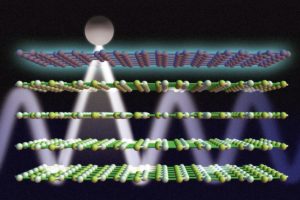Research expeditions:
- Controlling light-matter interaction using plasmon-phonon coupling
 Graphene has been shown to be good candidate for tunable plasmonics in the mid-IR and terahertz range, owing to the possibility of electrostatic doping and its ability to produce higher confinement and lower losses compared to metals. Substantial modification of emission spectrum of quantum emitters placed near graphene has been theoretically predicted. While recently, hBN is now being used as a substrate of choice due to the preservation of high carrier mobility, as opposed to conventional SiO2 substrates, the unique optical properties of hBN arising from its phonon modes, has largely been ignored in the context of emission problems. The phonon modes in hBN have been shown to give rise to natural hyperbolicity, a property which has so far only been restricted to the realm of artifical materials. Both graphene plasmons and hBN phonons reside in the mid-IR and we have shown (Nano Letters, 15:3172, 2015) how the optical properties of graphene-hBN heterostructures would allow one to marry the advantage of their constituents, electrical tunability in the former and high quality factor of the latter, through their hybrid plasmon-phonon polaritons. Through extensive electrodynamical computation via analytical and numerical methods, we have shown distinctively different interaction between an external quantum emitter and the plasmon-phonon modes in the two hyperbolic bands (arising from in-plane and out-of-plane phonons in hBN), leading to substantial modification of its spectrum. The coupling to graphene plasmons allows for additional gate tunability in the Purcell factor, and narrow dips in its spontaneous emission enhancement spectra. In an earlier collaborative work with a postdoc, we also addressed the question of plasmon-phonon coupling in a novel system comprising of graphene-lithium niobate. Interestingly, lithium niobate being a ferroelectric material, provides an excellent route to doping graphene(Applied Physics Letters, 102:-, 2013). Both these works were widely recognized and featured in several news articles.
Graphene has been shown to be good candidate for tunable plasmonics in the mid-IR and terahertz range, owing to the possibility of electrostatic doping and its ability to produce higher confinement and lower losses compared to metals. Substantial modification of emission spectrum of quantum emitters placed near graphene has been theoretically predicted. While recently, hBN is now being used as a substrate of choice due to the preservation of high carrier mobility, as opposed to conventional SiO2 substrates, the unique optical properties of hBN arising from its phonon modes, has largely been ignored in the context of emission problems. The phonon modes in hBN have been shown to give rise to natural hyperbolicity, a property which has so far only been restricted to the realm of artifical materials. Both graphene plasmons and hBN phonons reside in the mid-IR and we have shown (Nano Letters, 15:3172, 2015) how the optical properties of graphene-hBN heterostructures would allow one to marry the advantage of their constituents, electrical tunability in the former and high quality factor of the latter, through their hybrid plasmon-phonon polaritons. Through extensive electrodynamical computation via analytical and numerical methods, we have shown distinctively different interaction between an external quantum emitter and the plasmon-phonon modes in the two hyperbolic bands (arising from in-plane and out-of-plane phonons in hBN), leading to substantial modification of its spectrum. The coupling to graphene plasmons allows for additional gate tunability in the Purcell factor, and narrow dips in its spontaneous emission enhancement spectra. In an earlier collaborative work with a postdoc, we also addressed the question of plasmon-phonon coupling in a novel system comprising of graphene-lithium niobate. Interestingly, lithium niobate being a ferroelectric material, provides an excellent route to doping graphene(Applied Physics Letters, 102:-, 2013). Both these works were widely recognized and featured in several news articles.
